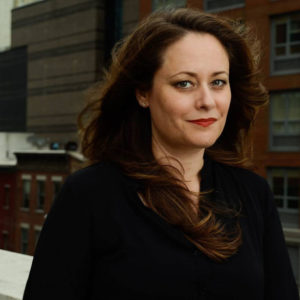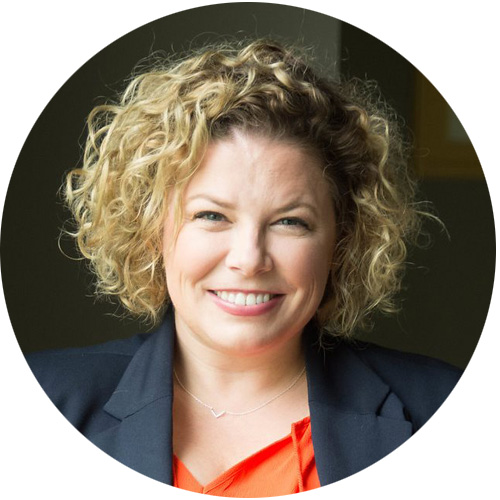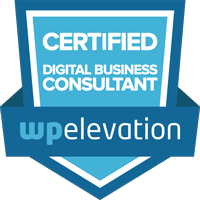Episode 10: Getting Buy-in And Implementing a CRM with Ashley Faison
In this episode, we talk with Ashley Faison about getting buy-in and implementing a CRM or donor database. Ashley is the Chief Development Officer with New Heights Youth in NYC and is a dynamic and tech-savvy nonprofit leader, organizational strategist and professional fundraiser with over $60M raised to her credit.
Ashley is a big believer in the power of a donor database or CRM. She’s worked in Blackbaud’s Raiser’s Edge and Salesforce and has been through the implementation of these systems with several nonprofits.
What is a Donor Database or CRM?
A CRM, or customer relationship management is a platform and approach to manage your organization’s interactions with current and prospective donors to strengthen relationships, improve retention and ultimately increase donations.
Why should a nonprofit or foundation use a CRM?
For Ashley, it’s all about the dashboards and access to information in real time. She loves being able to see her goals and her progress towards those goals at any time. She can easily and quickly share this information with other staff and board members, as well.
Moreover, without a CRM, there isn’t a central place to record interactions with donors and prospects, and share that information throughout the organization. Having these types of records are especially beneficial during times of staff transition. A CRM provides a place to store data, easily access it, and develop insights into the data. Armed with this information, Ashley and her team can prioritize their work based on real data and the analysis of it, not just their intuition (now that’s strategic!).
How do you get buy-in for investing in CRM?
To make the case, Ashley points out that to be effective and efficient, the organization must look at systems and how staff members are investing their time and energy. To do the job well, it’s important to document all of the information about a donor that exists in a staff member or board member’s head. This allows you to make strategic decisions about the information. Building trust is a huge factor of buy-in.
Once you have buy-in, how do you implement a CRM?
Ashley recommends:
1) Find your tribe.
Who are the people on staff or on your board who embrace and love tech? Get their buy-in on the CRM and recruit them to be part of your implementation team.
2) Create a change management plan.
It will answer questions like: What data will you move over? How far back in the data do you want to go? How will it be moved? When will you implement the CRM? How will you gain buy-in from all staff?
3) Be realistic about your timeline.
This will not happen overnight even though you’ll want it to. Most implementations take 6 months to a year from start to finish.
Lessons learned along the way
The technology is constantly evolving and improving. It is important to look at what is working and what isn’t, and monitor improvements and upgrades as they become available. Ashley shares her experience developing customizations and workarounds, only to have the CRM role out a better, more integrated solution later. As a team, you have to decide how to manage this.
Ashley also recommends looking for creative ways to fund the implementation of a CRM. She’s found pro bono support for staff training and more (resources listed below).
Resources:
About Ashely Faison
 Ashley Faison, LCSW is a seasoned non-profit leader, organizational strategist and professional fundraiser with over 18 years of experience and demonstrated success. Driven by creativity and compassion, she has helped management teams solve complex systemic challenges, built strategic partnerships from the ground up, raised millions of dollars to sustain charitable organizations, and inspired employees across a wide range of industries to become their best professional and personal selves.
Ashley Faison, LCSW is a seasoned non-profit leader, organizational strategist and professional fundraiser with over 18 years of experience and demonstrated success. Driven by creativity and compassion, she has helped management teams solve complex systemic challenges, built strategic partnerships from the ground up, raised millions of dollars to sustain charitable organizations, and inspired employees across a wide range of industries to become their best professional and personal selves.
Ashley has made a lasting impact as a start-up member of many successful organizations, including the federally funded System of Care Children’s Mental Health Initiative (YouthNet) to rethink youth mental health services; as founding partner of Moped Productions media group, where she spent over a decade utilizing story-based strategies to elevate conversations garnering recognition by the White House for their compassion work; Theatre Communications Group where she founded the Society for American Theatre; Change for Kids for which her School Change Team model was recognized as one of the country’s “Top 10 Most Scalable Models” by Mutual of America; to Campaign for Hope: a capital project for a 41,000 sq.ft. Hospice & Community Care campus wrapped with community gardens and filled with hand-procured locally sourced art, the space was later recognized in the architectural showcase for Healthcare Design Magazine.
She is currently Chief Development Officer for New Heights Youth, a NYC nonprofit that unlocks educational opportunities for inner-city student-athletes through basketball and academic coaching. Building upon her long history of intrepreneurship, within her first year she co-designed and implemented a pledge-based crowdfunding platform with GivingZone.com instituting a new internal funding stream, as well as, launching a scalable fundraising model for team-based youth basketball leagues across the country. Ashley holds a Bachelors and Masters in Social Work from Florida State University and is a NY licensed clinical social worker. One of her newest projects is founding Ember Philanthropy Group, the charitable arm of MDC Productions.
In 2010, she took on her greatest role to date when she and her “high school sweetheart” husband welcomed their daughter Adeline into the world. She is now driven by a greater mission, to develop a confident and capable human – a global citizen.
You can find Ashley online at:
- https://www.linkedin.com/in/ashleysfaison/
- www.newheightsnyc.org
- www.mdcproductions.com/ember
- www.mopedproductions.tv
- www.givingzone.com



